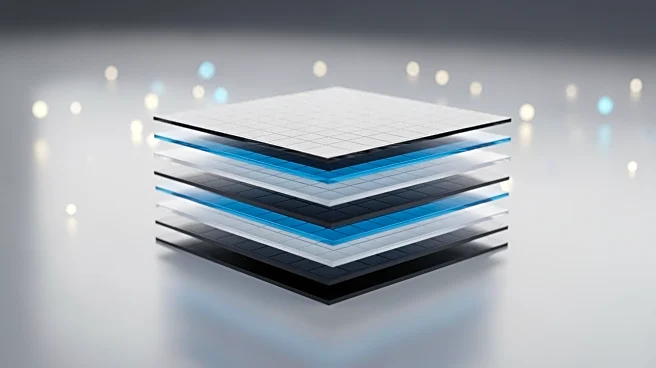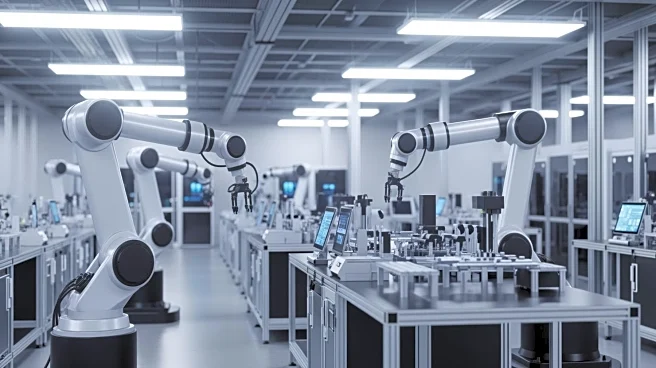What's Happening?
A groundbreaking chip design has been developed by Xiaohang Li and his team at the King Abdullah University of Science and Technology, which challenges the traditional limits of Moore's Law by stacking
semiconductor transistors vertically. This new chip features 41 vertical layers of semiconductors and insulating materials, creating a transistor stack that is significantly taller than any previous designs. The team produced 600 copies of the chip, all demonstrating reliable performance. This innovative approach allows for increased computing power without further miniaturization, which has been the traditional method since the 1960s.
Why It's Important?
This development is significant as it offers a potential solution to the stagnation of Moore's Law, which has been a guiding principle in the semiconductor industry for decades. By building upwards rather than shrinking components, this technology could lead to more sustainable electronic devices, reducing the carbon footprint of the electronics industry. The new chip design could be particularly beneficial for everyday devices such as smart home electronics and wearable health devices, providing enhanced functionality while consuming less power. This approach could revolutionize the way electronic devices are manufactured and used, offering a path forward as traditional methods reach their physical limits.
What's Next?
While the new chip design shows promise, there are engineering challenges to address, particularly regarding heat management. The current heat tolerance of the chip is 50°C, which needs to be increased by at least 30 degrees to be viable outside laboratory conditions. Overcoming these challenges will be crucial for the practical application of this technology. If successful, this vertical stacking method could become a standard in the industry, paving the way for more powerful and efficient electronic devices.
Beyond the Headlines
The shift to vertical chip design could have long-term implications for the electronics industry, potentially leading to a new era of device miniaturization and efficiency. This approach may also influence the design and manufacturing processes of future electronic devices, encouraging innovation in thermal management and material science. As the industry adapts to these changes, there could be significant economic and environmental benefits, aligning with global sustainability goals.











